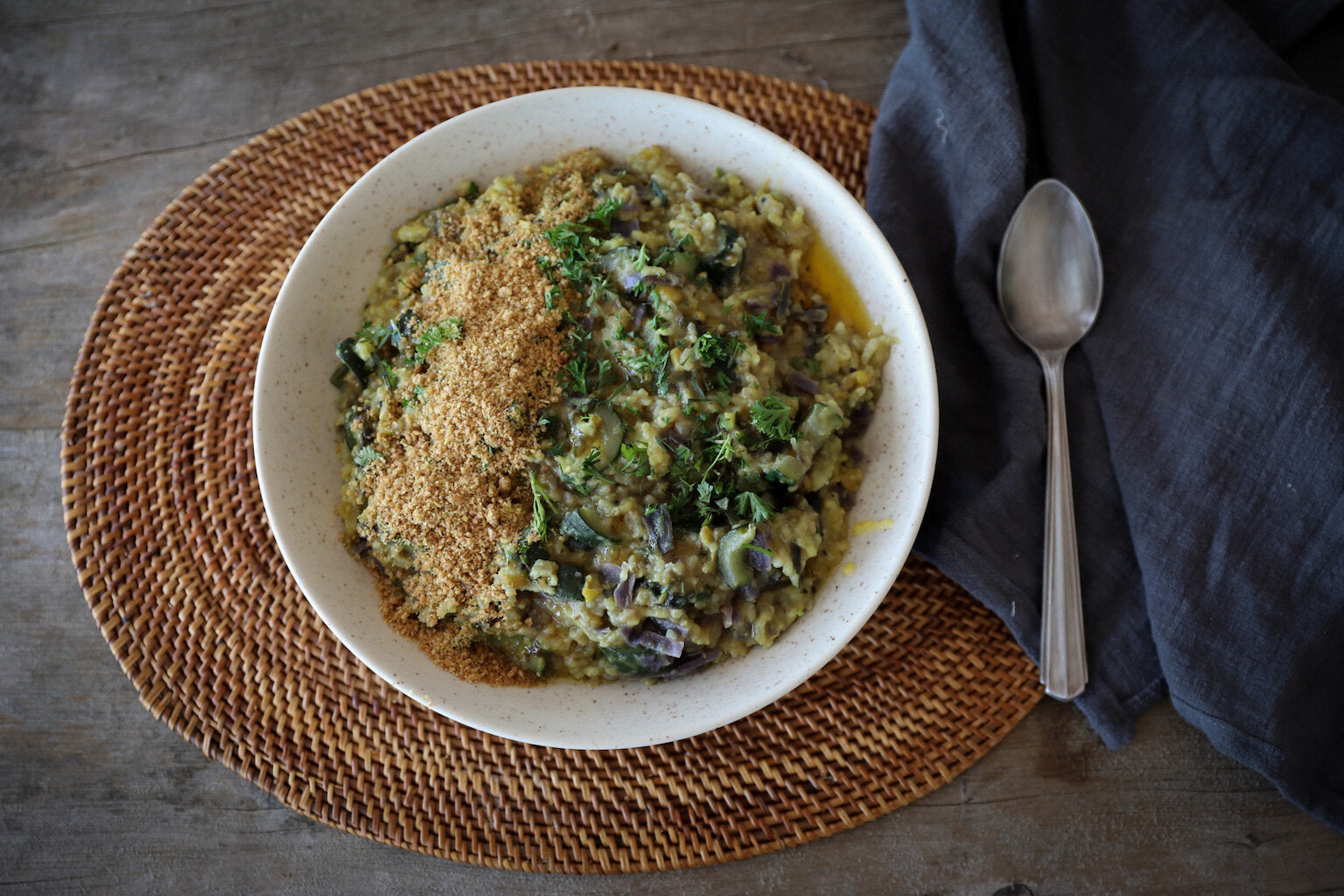
It’s spring, a time of transition and change. Rain showers wash away the heaviness of winter, while the saturated soil begins to warm, nurturing new growth.
Just as the earth renews itself in the spring, you can also. It may feel like an obvious thing to do, which in fact it is. You are of nature and will be drawn to its rhythms. From Ayurveda we understand that the more you live in alignment with the rhythms of nature, the more your true nature will express itself.
The seasonal shift can be looked at as a period of recovery and transformation. One form or state of being arises, where another form dissolves. The earth, the elements, the migratory animals, the vegetation that laid dormant, even how you may feel dramatically shifts. It is during these periods of transition where your body, mind, and certainly your digestion should be well tended to.
Kitchari, a simple meal of basmati rice, digestive spices, ghee, mung beans and optional vegetables, is ideal (and delicious) for this purpose.
It is a key component during our Panchakarma Home Therapy. Clients eat kitchari over a 10-day period. It’s balanced, satiating, easy to digest and simple to make. It is a wonderful meal to introduce during times of significant challenges and change.
But you don’t have to go through panchakarma to enjoy kitchari and experience its benefits. Here at Hale Pule, we eat kitchari every Saturday to strengthen agni, the digestive fire, by in fact, letting it rest. In doing so, it promotes greater mental clarity. Agni should be stoked, just like a fire, to stay strong. This easily digested meal gives agni the rejuvenation it needs to flourish and support your health. Think of it as a restful “vacation” for your digestion.
A simple kitchari is also a wonderful meal for busy professionals, parents, and students. Make it in a pressure cooker in the morning and take it with you for lunch. A student recently shared a method to make kitchari in a thermos: Just simmer the spices in hot ghee, add to a thermos that had boiled water in it for a few minutes to heat it up, with white basmati rice and split mung beans. Pour boiling water over everything, quickly screw on the top and let it cook over the morning to enjoy at lunch. It doesn’t get any easier than that. Be sure your thermos is large enough to handle the expansion of the rice.
We’ve posted a simple recipe below. This is an example of an Ayurvedic Kitchari, rice, split mung and a selection of mixed vegetables. No matter how experienced a cook you are, it’s easy to make a meal that tastes great, is satiating as well as comforting, and easy to digest.
As with everything, the quality of the ingredients and the energy you put into your kitchari will affect the taste. Being a good cook has little to do with formal training, rather it’s about finding high-quality, organic foods and coming to the kitchen with a sweet positive attitude, openness, and creativity.
Simple Spring Kitchari with Vegetables
Serves 4
You’ll need:
1 tsp. cumin seeds
1 tsp. coriander seeds
1 tsp. brown mustard seeds
3 tbsp. ghee
½ cup basmati rice
¼ cup split mung beans (if split mung is not available, use whole mung, soak and cook well)
1 strip kombu, cut into small pieces
4 -6 cups water
1/8 tsp. asafoetida (substitute fenugreek powder if asafoetida is not available)
1 tsp. rock or mineral salt
1 tbsp. fresh grated ginger root
1 tsp. turmeric, fresh or powder
½ tsp. cardamom
3-4 cups freshly chopped veggies, such as carrots, squash, pumpkin or kale (be sure you have a balance of augmenting and extractive vegetables)
Here’s how:
In a pot or pressure cooker, simmer kombu, asafoetida and half the salt in 1 1/2 tbsp. ghee on medium-low heat until fragrant. Add rice and split mung and stir to cover with spice mixture. Add water for desired thickness. If using a pot, bring to a simmer, cover and cook for 45 minutes or until grain and bean are soft. If using a pressure cooker, cover, bring to pressure and cook for 18-20 minutes.
Meanwhile, heat the remaining ghee in a saucepan and add the remaining salt, ginger root, turmeric, cumin seeds, coriander seeds and mustard seeds. Simmer 1-2 minutes until fragrant and then add the cardamom. Add the vegetables and stir to coat. Add water and cook veggies lightly until a knife goes in easily. Add to pressure cooker, stir and let sit at least 5 minutes to allow the tastes to become friends. Serve warm.
Visit our Ayurveda Lifestyle page for kitchen essentials
